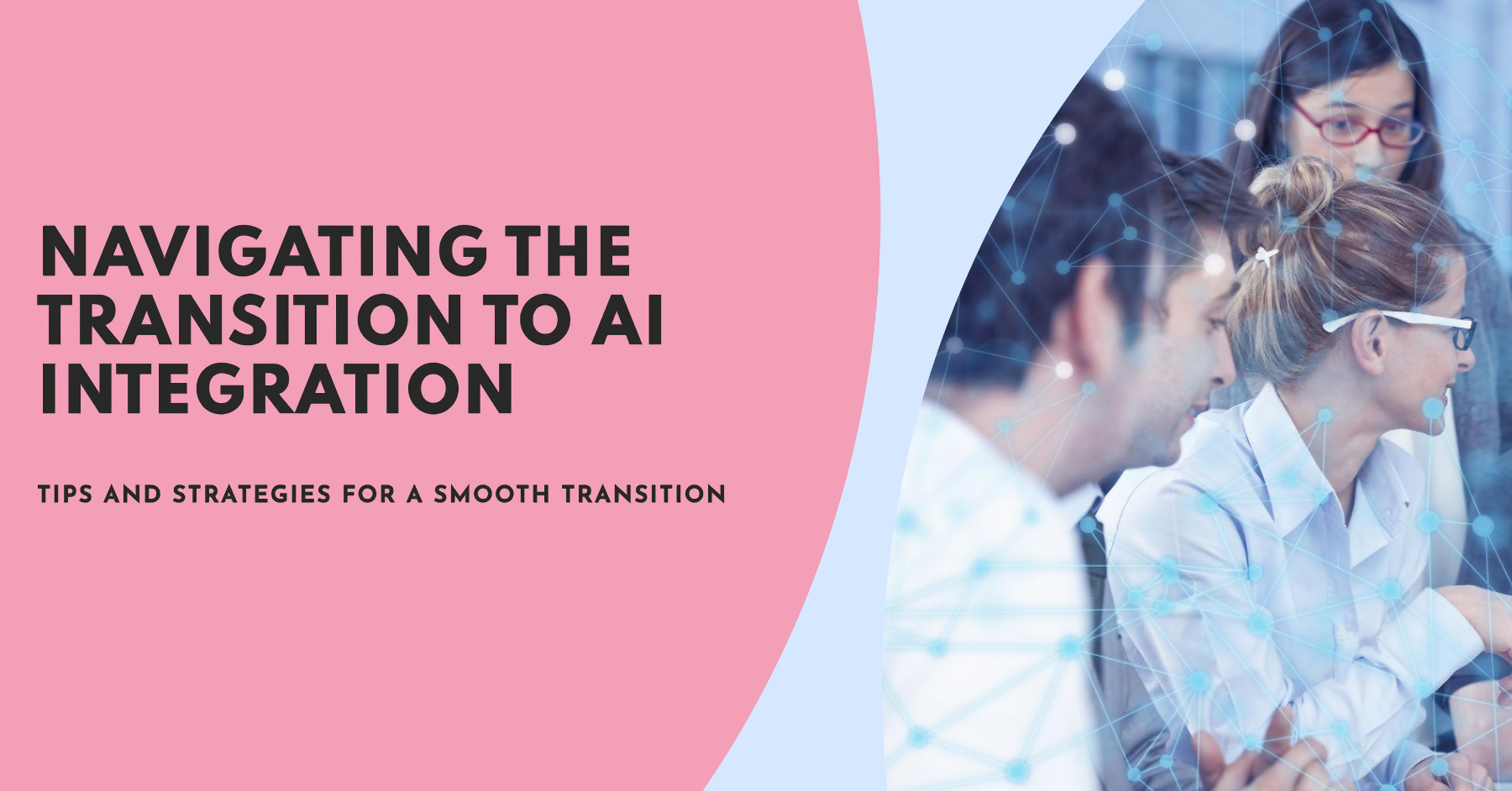Artificial intelligence (AI) is one of the most transformative technologies of our time, driving seismic shifts across industries from healthcare to transportation. Now, AI is poised to revolutionize the way we approach productivity and efficiency. By automating mundane tasks, surfacing data-driven insights, providing personalized experiences, and facilitating seamless collaboration, AI-powered tools have the potential to profoundly augment human capabilities. As AI capabilities continue to develop at a remarkable pace, integrating intelligent systems into our workflows is no longer a lofty ambition - it is an accessible reality.
The dawn of AI-powered productivity represents a paradigm shift in how businesses and individuals accomplish goals and allocate time and resources. Those who effectively harness intelligent tools and solutions stand to gain a tremendous competitive advantage by achieving more in less time. The future belongs to those who can optimize productivity via human-AI symbiosis. Read on to learn how you can be one of them.
Automating Repetitive Tasks: A Time-Saver Revolution
One of the most direct and impactful ways AI enhances productivity is by automating repetitive, predictable tasks. Activities like data entry, scheduling meetings, or compiling reports can have AI handles them, freeing up humans to apply their creativity, strategic thinking, and emotional intelligence on higher-value endeavors.
Industry | Repetitive Tasks Automated |
|---|---|
Customer Service | Transcribing calls, documenting interactions, FAQ responses |
Finance | Invoice processing, report generation, data reconciliation |
Healthcare | Appointment scheduling, prescription tracking, billing |
According to a McKinsey study, 45% of current workplace activities could be automated using existing AI technologies. This proportion is expected to accelerate in coming years as AI capabilities expand.
By deploying intelligent algorithms and deep learning models across workflows, businesses can achieve dramatic savings in time and labor costs. Employees can then channel their newly available time into innovation, relationship building, analytical thinking, and other areas where human skills shine. The rise of AI-powered task automation makes a clear case for augmented productivity via human - machine collaboration.
Data-Driven Decision Making: Insights for Improved Performance
Another area where AI significantly moves the needle on productivity performance is data-driven decision making. By processing volumes of structured and unstructured data that would be impossible for humans to analyze, AI solutions extract patterns, trends, and insights that optimize the decision-making process.
Predictive analytics, a branch of advanced analytics centered on using data to make predictions about future outcomes, is one of the most ubiquitous examples of AI-powered decision support. Retailers implement predictive analytics to forecast purchasing trends, manufacturers use it to assess equipment failure rates, and marketers leverage it to model the impact of campaigns.
Industry | AI-Driven Decisions | Outcomes |
|---|---|---|
Manufacturing | Predictive maintenance alerts | Reduce downtime by 30-50% |
Healthcare | Clinical decision support | Improved patient outcomes, lower costs |
Finance | Algorithmic trading strategies | Higher returns, minimized risks |
The data does not replace human judgment and expertise but rather augments it by bringing quantifiable insights to major strategic decisions. This results in improved forecasting, optimized operations, and overall gains in productivity and performance.

Personalized Experiences: Tailored Solutions for Optimal Productivity
One-size-fits-all solutions rarely result in the most efficient outcomes. Humans have diverse needs, priorities, and ways of accomplishing tasks. AI-powered tools have the capability to deeply understand individual users and respond with personalized experiences that optimize their productivity.
AI applications can observe how a user interacts with an interface, analyzing preferences for certain features over others. It then tailors the options, workflows, and notifications to match that individual's habits and needs. For example, AI writing assistants learn a user's tone and style in order to make suggestions that align with their branding. Virtual assistants understand contexts and discussion history in order to provide recommendations suited for that moment.
Personalized experiences enabled by AI technology include:
Contextual recommendations
Customized notifications and reminders
Individualized workflow building
Writing assistance tuned to author's voice
By providing the right solutions at the right times in the right ways, personalization drives higher engagement, satisfaction, and most importantly - productivity. Users remain focused and empowered to achieve their objectives versus wasting time and effort wrestling with generic tools.
AI-Empowered Collaboration: Breaking Down Barriers for Teamwork
Achieving ambitious goals frequently requires aligning efforts across multiple teams, departments, and locations. However, organizational silos, communication gaps, and logistical barriers often obstruct seamless collaboration. AI has the power to break down these obstacles through enhanced connectivity.
Intelligent platforms streamline communication flows across the enterprise, ensuring conversations are visible to all relevant stakeholders. They structure messages and documents so key details are easily searchable later. Users can quickly see the status of collaborative projects and coordinate task management.
Other AI collaboration use cases include:
Knowledge management portals
Smart meeting assistants
Automated note/summary generation
Collaboration hubs with universal access
By facilitating frictionless teamwork, AI technology enables groups to productivity pursue shared objectives. It expands perspectives through enterprise-wide visibility. And it saves countless hours previously lost to inefficient collaboration.
AI-Powered Tools and Applications: A Practical Guide
Now that we've explored the enormous potential of AI solve erase productivity roadblocks, letââ¬â¢s get practical. Here is an overview of leading categories of AI software and examples of tools to consider:
Virtual Assistants
Virtual assistants use natural language processing and generation to understand commands, answer questions, make recommendations, and complete tasks much like a human administrative assistant. Top options include Clara from Anthropic, Alexa from Amazon, and Google Assistant.
Document Generation
AI writing tools generate all types of documents tailored to a user's tone, style, and intent. Examples include creative writing aids, email/letter templates, report and proposal structures. Leading solutions include Jasper and INK from Anthropic, Attentive Folio, and Articoolo.
Predictive Analytics
Predictive analytics platforms process historical and current data to uncover insights that inform strategic decisions and forecast future outcomes. They are especially valuable for understanding customer behavior. Check out Anthropic's Claude, SAS, and SAP Predictive Analytics.
Task/Project Management
Solutions like monday.com, Airtable, Asana, and Trello incorporate AI to prioritize tasks, optimize schedules, personalize workflows, and ensure seamless collaboration across teams. They boost productivity through automated organization.
Business Intelligence
Tableau, Microsoft Power BI, and other BI tools leverage natural language AI to turn data into actionable business insights. Users can query data pools conversationally to manipulate forecasts, evaluate performance, identify trends/outliers, and support real-time decisions.
As exponential advances in artificial intelligence unlock unprecedented power to enhance human productivity, competitive advantage will come from effective integration of these emerging solutions. Review options aligned to your unique priorities and workflows. Small steps to incorporate AI can set your team or organization firmly ahead - the future of work awaits.

AI Integration and Adoption: Navigating the Transition
Integrating any new technology - especially one as radically transformative as AI - inevitably involves growing pains. Organizations cannot expect to install an intelligent platform one day and realize optimized productivity the next. The path requires thoughtful change management and continuous evolution of processes.
Here are best practices to ensure a smooth, successful adoption of AI productivity solutions:
Conduct integration in phases - Pursue a modular approach versus an organization-wide overnight overhaul. Target one team or workflow at a time.
Provide extensive training - Set personnel up for success by giving detailed guidance on how to leverage new AI tools. Appoint internal AI champions.
Encourage transparency and feedback - Create open channels for workers to share their experiences using intelligent systems and suggest additional support needed.
Customize solutions to role needs - Take an individualized approach to building AI into workflows rather than blanket integration. Meet employees where they are.
Allow time for adaptation - Recognize that comfort and skill level with AI assistance will require time and patience to develop through sustained usage.
Refine continually - Use insights from users to continually adjust AI implementation for optimal utility rather than settle on the initial integration.
With a collaborative, customer-centric approach, your organization can maximize benefits of AI productivity solutions while ensuring a positive transition for all stakeholders. Workers both empowered by technology and purposefully included in its evolution will drive new heights of human achievement.
The Future of AI-Powered Productivity: A Paradigm Shift
We stand today at the genesis of a workplace revolution. AI-powered tools have only begun to permeate businesses and expand in sophistication. Over coming years, productivity via human-machine collaboration will usher in sweeping advancement across every industry.
Soon intelligent systems will not only manage repetitive tasks and complex data but also actively strengthen human thinking through dynamic exchange. Assistants will integrate directly into our workflows, collaborating so organically that we hardly notice AI at work. However, we will notice the astonishing output enabled by this symbiotic relationship.
A future boosted by AI is no distant dream - progressive organizations of all sizes have already built integrated foundations upon which rapid expansion is possible. The technology race of the coming decade will favor the efficient, the augmented, and the productive. Now is the time to master what may soon master nearly all realms of business.


